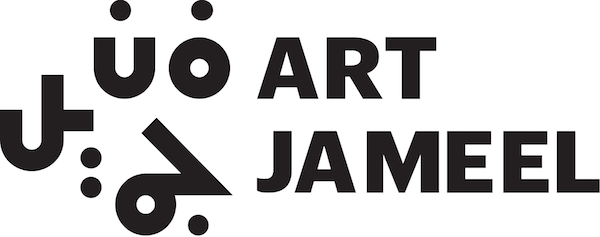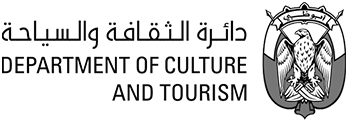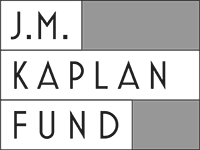In partnership with EAMENA, Art Jameel, and ICCROM-ATHAR, Global Heritage Fund recently co-organized a three-day conference in Sharjah, UAE. From December 4-6, forty speakers and one hundred participants gathered at “Protecting the Past: from Digital Documentation to Heritage Management in the MENA Region” to discuss best practices in heritage protection and present projects from countries including Jordan, Egypt, Iraq, Yemen, Iran, Abu Dhabi, Morocco and Syria.
At the opening ceremony, Dr Webber Ndoro (ICCROM), Zaki Aslan (ICCROM-ATHAR), Robert Bewley (EAMENA), George Richards (Art Jameel), and Stefaan Poortman (GHF) introduced themes for the next days of presentations and discussions. The conference was also honored to receive His Highness Sheikh Dr Sultan bin Muhammad Al Qasimi, the Ruler of Sharjah, who spoke about his support for heritage protection and the conference topics.
“Protecting the Past: From Digital Documentation to Heritage Management in the MENA Region.”
ICCROM-ATHAR Regional Conservation Centre, 4-6 December 2018.
Several topics prevailed during the conference, including the need to ask ethical questions about digital documentation during conflict, how to empower local universities and NGOs to attract cultural heritage funding, and the growing importance of engaging with the private sector. In particular, discussions highlighted how involving urban planners in heritage protection will be vital for safeguarding cultural sites in the face of growing urbanisation.
Many speakers highlighted the importance of involving local communities in heritage protection and emphasized that without local involvement, heritage projects are oftentimes doomed to failure. As we have previously stated, sustainable conservation requires strong project foundations, and projects that ignore local people and communities are destined to fail no matter their best intentions. In contrast, projects that involve communities can greatly enhance local resilience and rebuilding after disaster and conflict. Through such projects, heritage can be a powerful economic force for good, helping communities lift themselves out of impoverishment and create sustainable pathways to prosperity.
At GHF, our unique Preservation by Design methodology is built around this important understanding. Our projects — from establishing a community-lead tourism program in Cambodia to building capacity for local conservators through skills training in Turkey — include partnerships with local organizations and stakeholder involvement at every step. We are heartened that the international heritage community is increasingly emphasizing this community involvement and resilience, pillars of the sustainable projects that we are proud to support throughout the world.
In addition to community inclusion, conference speakers also explored the many opportunities and challenges facing digital documentation of heritage sites. Modern technologies such as drones and laser scanning allow for the unprecedented collection of data at heritage sites. This data can be an invaluable resource for studying existing sites and maintaining records of areas damaged by conflict and disaster.
However, even the most promising new technologies are not without their challenges. Data can quickly become irrelevant or outdated, especially when it is not maintained in a consistent manner. In addition, many new technologies are inaccessible due to costs — how truly useful is the latest heritage conservation tool if many potential users cannot afford to access it?
One of our recent programs, AMAL in Heritage, addresses these issues. With our partners, GHF has launched AMAL as a platform for managing disaster and conflict risks for cultural heritage through a combination of tools, training, and community development. AMAL’s mobile and web applications allow local community members to actively participate in risk preparedness and emergency response. Initiated in 2015, AMAL has recently undergone developments that increase access for a wider range of community participants.
During the conference, developers Andres Acosta and Soroush Khanlou presented AMAL through both a panel and the “Digital Documentation Showcase,” where conference attendees were able to interact with the application and learn more about its development. In particular, our developers highlighted the integration of AMAL with EAMENA, the Endangered Archaeology in the Middle East and North Africa project at Oxford University. By strategically integrating AMAL’s in-the-field data acquisition with EAMENA’s existing network of users, this partnership — tentatively titled Heritage Bridge, or HerBridge — allows national stakeholders and trainees in the MENA region to actively participate in site monitoring and reporting while also enhancing data and site records in the EAMENA database.
Global Heritage Fund was also pleased to announce we are launching an award in partnership with the JM Kaplan Fund to fund documentation projects carried out by heritage experts trained through EAMENA’s “Training in Endangered Archaeology Methodology” program. We look forward to supporting the documentation work of EAMENA trainees in the MENA region to complete their projects and prioritize heritage sites for preservation. The award will cover a maximum of three grants, each in the range of $5,000-$10,000. The full terms of the grant will be disclosed in February, when the call for applications will be officially opened.
Although the conference focused on historic areas in the Middle East and North Africa, many of the speakers raised issues that affect historic sites throughout the world. One such issue was raised by GHF partners Dr Salima Naji and Dr David Goeury, who presented on the ancient granaries of Morocco, where we recently expanded our conservation projects following a successful pilot program at the Amtoudi granary. During her talk, Dr Naji emphasized the importance of restoring and integrating heritage sites within their local contexts. As she reminded conference participants, heritage is not just about digital documentation and static site histories: “Heritage is always alive.”
With its rich history and a nomination on the Tentative List for UNESCO World Heritage Sites, Sharjah was a particularly appropriate setting for this year’s Protecting the Past conference. Conference participants had the opportunity to learn about Sharjah’s development and UNESCO nomination at that Heart of Sharjah Cultural Center. Participants also visited the Jameel Arts Centre, a contemporary institution supporting creative communities and heritage programs.
Protecting the Past 2018 was just the latest in our ongoing work to support heritage protection through increased capacity building and community development throughout the world. Global Heritage Fund is proud to support a wide range of programs and work with many partners around the globe. Our programs are possible thanks to support from those who care about heritage and history — like you! Thank you for supporting our work.









